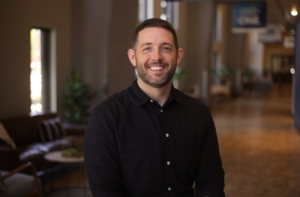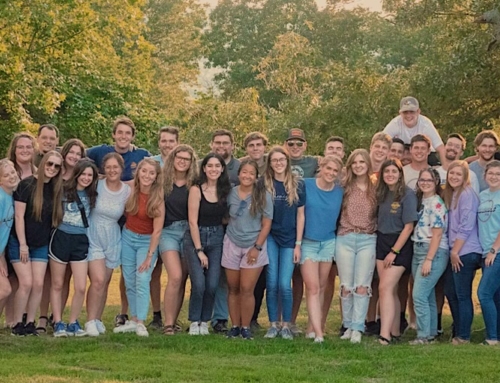JEFFREY KENT
Fall is right around the corner. Is your church prepared for the Fall influx? For most churches, it’s an exciting time, because with Fall comes an influx of people and activities. Churches tend to see a 15-30% attendance bump in Sunday services in Fall over Summer. Regulars come back from summer vacationing. Guests come in looking for a place to get their families connected.
We all know the usual first response for churches – get some events on the calendar! And most churches certainly will. Fall is a great time for fellowships, outreaches, retreats, small group launches, and the like. Well-planned events can be a great “shot in the arm” for a church wanting to bring a boost of needed energy after a long summer.
However, while churches need plenty of connection opportunities, too many can attest to where the “fill the calendar with events” approach leads – a church calendar ready to burst and burnt-out volunteers. It’s important to recognize that an event-only approach, especially attendee-only style events, does not necessarily equate to healthy, biblical fellowship. Without some well-thought-out strategy, they can lead to more exhaustion than growth in your church culture.
In Acts 2, following the day of Pentecost, Luke records that the first believers were devoted primarily to four areas. Along with teaching, breaking of bread, and prayer, he lists fellowship. The Greek word is koinonia. This type of fellowship for the early church was a deep communion with one another, a spiritual solidarity in which members were united in an intimate bond with Christ as the head.
So, how does the Church today protect against an attendance-driven culture of endless events? How do we, instead, foster a culture of koinonia fellowship? Koinonia culture is something that must be organically attained through genuine connection that allows members to discover their role in the body through the Holy Spirit. A great place to begin is in how we view people in relation to the Church.
Consider why people come to your church in the first place. Perhaps the location. Their family or friends attend. The size suits them. It could be the preaching ministry. Maybe because of a specific program, such as your kids’ ministry or men’s ministry. Each of these attractional points is generally attendance driven. The goal is to bring people through the front door.
Attractional services and events are a good thing. The Church needs to have a big front door where people in your area know the church exists and feel welcome to walk through the door. The risk is that if this is the only space the Church exists in, then getting people through the door becomes the primary success measure.
A second risk is that events are ever-changing. When people are solely connected through attendance-driven events, a change in the event can be greatly unsettling. Sunday service times changed! They changed our kids’ program! They canceled the choir! These can disillusion church members and tend to be the primary cause of people leaving churches. When a family’s connection is the event, much of their identity in the church is tied up in that event as well.
Churches may champion discipleship, but when people showing up becomes the end goal, the church calendar unintentionally gets structured around what gets people to attend. Most events demand little more than showing up and warming up a seat. We celebrate when the crowd comes, and when they leave, we get back to planning to bring them back, all the while wondering why we’re not seeing the kind of transformation we are praying for.
Attendees were never the end goal for Jesus. The crowd was the invitation point from which He would call all who would come into a journey of transformation and, ultimately, multiplication. Our churches can have a great front door with attractional events, but if the culture lacks depth and structure, if there is no clear invitation to any room beyond the front gathering room, the result will be a back door just as big as the front.
So, as we plan for the Fall influx, time is of the essence to know that we are ready to engage people and invite them into a journey of authentic growth and koinonia fellowship. Three things to keep in mind as you prepare for this Fall:
First, you need attractional events that will engage your surrounding community, but more importantly, invite as many as possible into the front door and then beyond the front door and into koinonia fellowship. Remember, attendance is the invitation, not the final solution! Events should be designed strategically with clear next steps to spur people along in their faith journey.
Beyond dynamic worship services, churches also need engaging church community life throughout the week. Consider age specific gatherings, like themed kids’ events, student back-to-school parties, college hangouts, parent date nights with free childcare, and senior-aged day trips. Get creative! A healthy church also needs ongoing effective outreaches to allow church members to practice their giftings. The options are endless there but should involve plenty of engagement beyond dropping a door hanger.
As a side note, as you are planning for people to come onto your campus, take time to review your facilities. Walk around your campus with the eyes of a first-time guest. Is your kids’ check-in process clear? Is outdoor lighting adequate in the evening? Do you have spots around campus that need to be freshened up? What about the language on your connection cards? Is it clear and engaging? The areas that you neglect will speak volumes to your guests.
Secondly, follow-up is paramount. This is the distinct difference between treating people like attendees and inviting them into koinonia fellowship. Assess your follow-up processes. How do you follow up with first-time guests in a way that feels genuine? Beyond, “Thank you for coming,” follow-ups should have an invitation into deeper levels of community. How do you follow up with salvations? Baptisms? Prayer requests? New members? Graduates? Develop processes, and stick to them.
Lastly, have a clear, ongoing pathway for people to discover their gifts and use them. Multiplication will only happen through empowerment. A church committed to gift development must also be okay with things looking a little messy sometimes! The more that things look perfectly polished, the more people become comfortable sitting rather than serving, falsely believing that ministry is for professionals only. Sunday Serve Team is a great launching point, but it cannot be the only avenue. If we are championing community over events, we must also be training members to use their gifts daily.
What greater win this Fall than to not only have great attractional events to bring people in, but to have greater intentionality to train them and send them back out? Fall influx is coming! Are you ready?

Jeffrey Kent is an author, speaker, and the COO of Duck Commander. His heart is for the local church and has been teaching, preaching, and serving churches for over 20 years including nearly 3 years on the mission field in China. Jeffrey and his wife Abigail are passionate about marriage and regularly lead marriage conferences and events across the country.
Jeffrey graduated summa cum laude from Liberty University with an MDiv in Discipleship and Church Ministry. He continues to teach the Word of God through weekly men’s Bible studies at his home church.
Jeffrey and his wife, Abigail, both live in West Monroe, La, where they are raising their two children. They love spending time with their kids and investing in their church community.
This article was originally published in the 2023 Fall Edition of the Destiny Magazine. You can find the online edition here.






